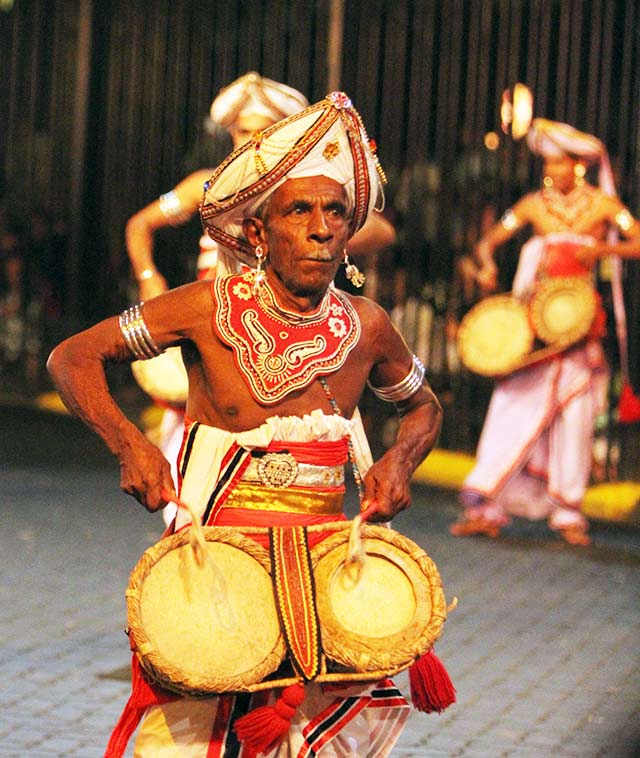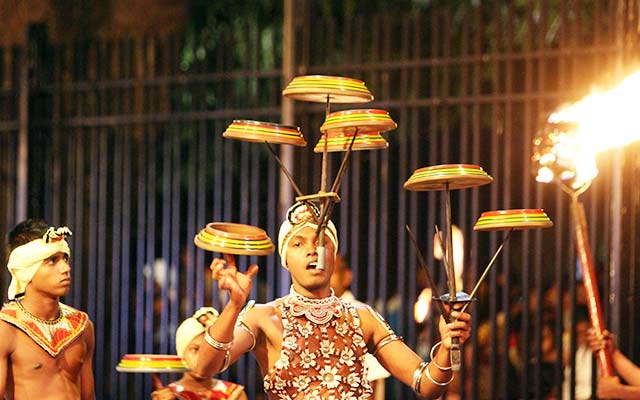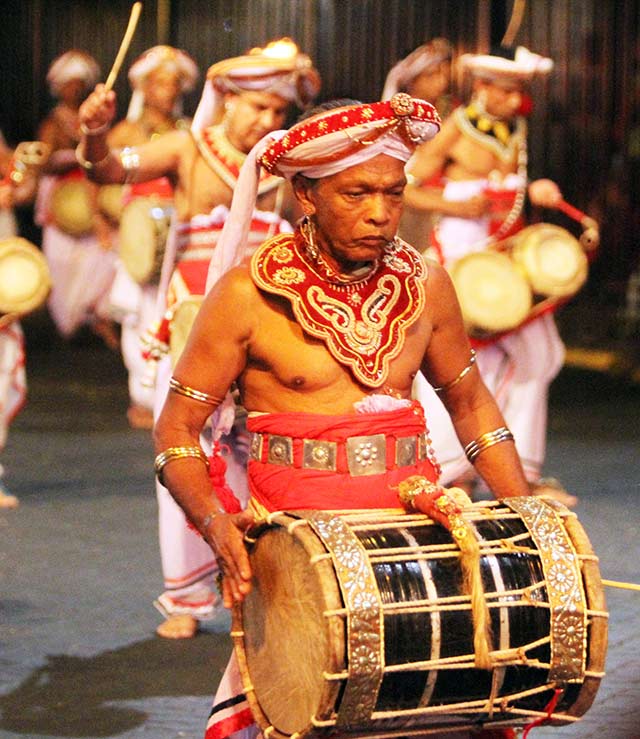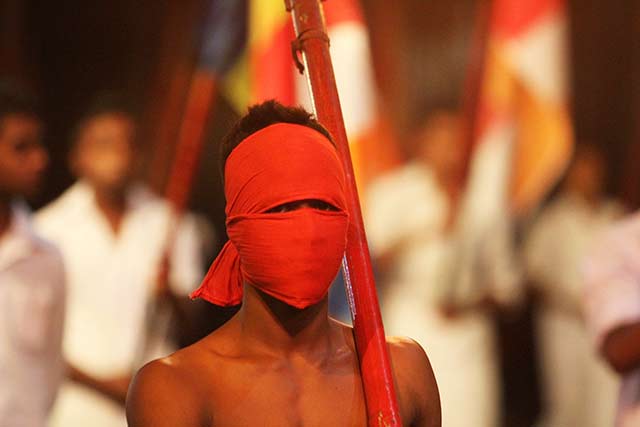
|
|||||||||
|
| |||||||||
Kandy Esala Peraheraby Sujan JayasingheThere are many number of perahara festivals in Sri Lanka. Almost all perahera festivals are based on the religion, especially Buddhism. The Esala Perahera in Kandy is one of the oldest and grandest of all Buddhist pageants in Sri Lanka. Even though it is a Buddhist event, other religions devotees also take part here. The Esala Perahera in Kandy parades along the streets to honor the sacred Tooth Relic and the four ‘guardian’ gods: Natha, Vishnu, Kataragama and Goddess Pattini. The Kandy Esala Perahera is held annually in July and August on days fixed by the Diyawadana Nilame of the Dalada Maligawa (Temple of the Sacred Tooth Relic). The Sacred Tooth Relic was brought to Ceylon in the reign of King Kirthisiri Meghawanna who ruled at Anuradhapura from 303 – 331 AD. On the following new moon in July an Esala tree or at the present time, usually a Jak tree or Rukkattana tree is cut and ‘Kap’ planted in Natha, Maha Vishnu, Kataragama and Pattini dewalas vowing that the perahera will be held. For the next four days the ‘dewala perahera’ is conducted within the dewala premises. Following this first stage, the perahera goes in procession for ten days in succession over a prescribed route along the main streets of Kandy. On each of these days, the peraheras of dewalas proceed to the entrance to the Dalada Maligawa, where they join the Maligawa perahera and the combined procession goes winding along the prescribed route. The first six days of the perahera is called the Kumbal Perahera, and the second phase of the perahera, the Randoli Perahera, from the randoli or the gilded palanquins of the four dewalas, which are a feature of the processions the next five nights and the last night is the grandest of all. The main perahera procession consists of five separate peraheras which are Dalada Maligawa Perahera, Natha dewala perahera, Maha Vishnu dewala perahera, Katharagama dewala perahera and Pattini dewala perahera. All pereharas are comprised with religious and cultural items. Whip crackers lead the way and announce the approach of the perahera by cracking their whips. Whip crackers come into picture only at the commencement of the Randoli Perahera. They do not take part in the kumbal perahera. The flag bearers walk next in single file on either side of the road. After that Peramune rala rides on the first elephant.Next comes the drummers playing Hevisi or martial music on a variety of drums such as dawula, tammettam and bera and blowing horanawa. The Gajanayaka Nilame comes next. He rides on elephant and carries a silver goad (Ankusa) which is the symbol of his authority. After that Kariyakorale, who is, next to the Diyawadana Nilame. Now comes Maaligawe tusker to carry the perahera karanduwa (golden casket) containing the sacred relics. A canopy is held over the tusker, and pavada. Those who have the privilege of going up to the octagon and watching the formation of the perahera from there still get chance of seeing the Diyawadana Nilame comes into the courtyard of the temple accompanied by drummers and dancers walking on pavada and carrying aloft the golden casket. The Natha dewala perahera, maha Vishnu dewala perahera, Katharagama dewala perahera, pattini dewala perahera follows the Maligawa perahera respectively. The long procession ends with the Randolis borne by the tenants of the Dalada Maligawa. The Diyawadana Nilame may, if he desires, invites the Adikarams and Dissawes to walk with him in the Perahera. Furthermore, if for any reason he is unable to officiate in the procession, he may ask one of the Basnayake Nilames to take his place. Incidentally, the best time to see Esala Perahera is on the last two nights. This festival is a sacred festival to all of us. We have to give our respect as much as we can. As the Sri Lankans we should reserve a time to watch this colorful event lively. Pics by Chandana Wejesinghe Courtesy: The Nation of September 6th 2015
|




